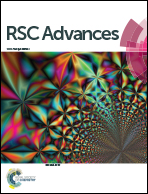Structural and metabolic adaptation of cellulolytic microcosm in co-digested Napier grass-swine manure and its application in enhancing thermophilic biogas production
Abstract
Biogas production from cellulosic wastes has received increasing attention. However, its efficiency is limited by the recalcitrant nature of plant cell wall materials. In this study, an active and structurally stable lignocellulolytic microcosm (PLMC) was isolated from seed culture in sugarcane bagasse compost by successive enrichment on Napier grass supplemented with swine manure, which is a mixture of highly fibrous co-digested waste under septic conditions. Tagged 16S rRNA gene sequencing on an Ion PGM platform revealed the adaptive merging of microorganisms in the co-digested substrates resulting in a stable symbiotic consortium comprising anaerobic cellulolytic clostridia stably co-existing with facultative (hemi)cellulolytic bacteria in the background of native microflora in the substrates. Ethanoligenens, Tepidimicrobium, Clostridium, Coprococcus, and Ruminococcus were the most predominant taxonomic groups comprising 72.82% of the total community. The remarkable enrichment of catabolic genes encoding for endo-cellulases and hemicellulases, both of which are key accessory enzymes in PLMC, was predicted by PICRUSt. PLMC was capable of degrading 43.6% g VS and 36.8% g VSS of the co-digested substrates within 7 days at 55 °C. Inoculation of the microcosm to batch thermophilic anaerobic digestion containing both substrates led to a 36.6% increase in methane yield along with an increase in cellulose removal efficiency. This study demonstrated structural and metabolic adaptation of the cellulolytic microcosms isolated in the background of native microflora from the co-digested wastes and its potent application in the enhancement of anaerobic digestion efficiency.



 Please wait while we load your content...
Please wait while we load your content...